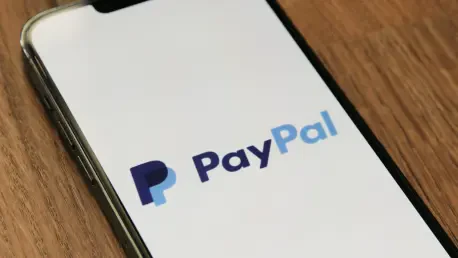The rapid advancement of mobile money services is reshaping the landscape of global economies, with over two billion registered accounts in existence as of 2024. This revolutionary growth is fueled by technological innovation, inclusive financial strategies, and supportive regulatory frameworks, contributing to the remarkable acceleration in mobile money adoption. The expansion from the first billion users, which took an impressive 18 years, to a doubling in just five years highlights the dynamic shift towards digital financial services. These changes underscore the extensive impact of mobile money, which now stands as a crucial component in promoting financial inclusion and economic development across various regions.
The Economic Ripple Effect of Mobile Money
Driving Financial Inclusion and Economic Growth
Mobile money has emerged as a transformative force in achieving financial inclusion around the world. In 2024 alone, the sector witnessed a notable increase of 20% in transaction volumes and a 16% rise in transaction values, resulting in a remarkable $1.68 trillion processed through approximately 108 billion transactions. Such dramatic growth illustrates the essential role mobile money plays in facilitating economic progress and enhancing access to financial services for underserved populations. By 2024’s end, regions with robust mobile money infrastructure saw an impressive addition of $720 billion to their GDP, marking a 1.7% increase. Sub-Saharan Africa, in particular, has taken the lead as a prominent player in mobile money utilization, with East and West Africa displaying substantial growth. Similarly, countries within the East Asia-Pacific region, such as Cambodia, Fiji, the Philippines, and Vietnam, benefit significantly from conducive regulatory environments fostering this flourishing financial ecosystem.
The role of mobile money in driving economic expansion extends beyond national borders, with global implications for trade and investment. By providing millions with access to financial services, it has democratized economic participation and enabled a more inclusive financial system. Mobile money has decreased dependency on cash-based transactions, resulting in greater financial transparency and reducing the potential for corruption. These changes have made it easier for individuals and small businesses to participate in regional economies, making strides towards reducing poverty and enhancing living standards. The ability to send, receive, and manage money through mobile platforms is reshaping how economies function, highlighting the potential for continued growth and economic integration at both local and global levels.
Bridging the Digital Gap and Offering Financial Services
Despite its extensive reach, mobile money still faces significant challenges, chief among them being the gender disparity in usage. A striking gap remains evident, as seen in eight out of twelve surveyed countries where women lag in adoption. Often, this disparity stems from limited awareness and low levels of digital financial literacy, particularly among women. To bridge this divide, nearly 60% of mobile money providers have stepped up efforts to launch digital literacy initiatives aimed specifically at empowering women. These initiatives are vital in equipping women with the necessary skills and confidence to engage actively with mobile financial services, thereby promoting gender equality in financial accessibility.
Beyond merely facilitating transactions, mobile money has evolved into a sophisticated financial ecosystem offering comprehensive services such as credit, savings, and insurance. This expansion into more robust financial products allows consumers to not only manage day-to-day transactions more efficiently but also plan and secure their financial futures. Such diversification makes mobile money more than a financial tool; it becomes an indispensable part of users’ financial planning, enabling them to withstand personal and economic challenges. In this way, mobile money continues to strengthen its role as a vital catalyst for financial empowerment and economic resilience.
Overcoming Barriers and Enabling Future Growth
Addressing Gender Disparities and Enhancing Financial Literacy
One critical hurdle mobile money faces is achieving gender parity in usage. Notwithstanding its exponential growth, a significant gender gap persists, hindering the full potential of mobile financial services. To address this, providers are increasingly implementing targeted strategies to elevate digital literacy among women, often customizing programs to cater to specific demographic needs, such as rural or less educated populations. By focusing on increasing awareness and enabling greater access to technology, these efforts aim to empower women to participate more freely and fully in the mobile money ecosystem, narrowing the gender divide and bolstering overall economic participation.
Efforts to close the gender gap are further supported by partnerships between mobile money providers and non-governmental organizations, which work collaboratively to address socio-economic barriers. By creating supportive environments and continuous education programs, these partnerships aim to foster an atmosphere where women can develop digital skills, earn their own income, and actively contribute to the economy. This concerted push not only helps overcome inherent biases and obstacles but also cultivates an inclusive economic framework that celebrates and leverages the unique contributions of all individuals.
Expanding Services and Future Opportunities
The future of mobile money hinges on its ability to adapt and innovate in response to changing consumer demands. As technology advances, the scope of services provided by mobile money platforms is also expanding. Currently, there is a concerted focus on broadening the range of financial services available, including enhanced savings plans, microloans, and personalized insurance products. Such initiatives are poised to meet the diverse financial needs of the global population, thus cementing mobile money’s place as a versatile and indispensable part of everyday life.
Looking ahead, there lies an exciting prospect for collaboration between mobile money providers, fintech companies, and traditional financial institutions. By leveraging technology and data analytics, these collaborations stand to offer personalized financial solutions, streamline operations, and significantly enhance user experiences. The ongoing development of mobile money has continuous implications for the future of global economies, suggesting that it will remain a formidable force in transforming and democratizing access to financial resources. As it continues to expand and innovate, mobile money will likely play a critical role in shaping the next chapter of economic empowerment and growth on a global scale.
The Future of Empowerment Through Mobile Money
The dramatic surge in mobile money services is reshaping global economic landscapes, with over two billion registered mobile money accounts recorded by 2024. This transformative growth is primarily driven by technological advancements, inclusive financial strategies, and supportive regulatory policies, each playing a significant role in the swift adoption of mobile money. Such adoption has seen exponential growth; whereas reaching the first billion users took 18 years, the numbers have doubled to two billion in just five additional years. This rapid expansion highlights a considerable shift towards digital financial services, reflecting the increasing impact of mobile money. Today, mobile money stands as a vital tool, fostering financial inclusion and economic development in diverse regions around the world. By promoting accessible financial services, it helps bridge the gap for unbanked populations, empowering individuals and small businesses and enabling a more interconnected and economically thriving society.









